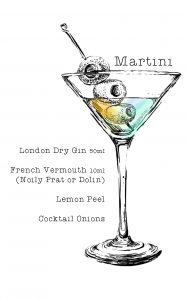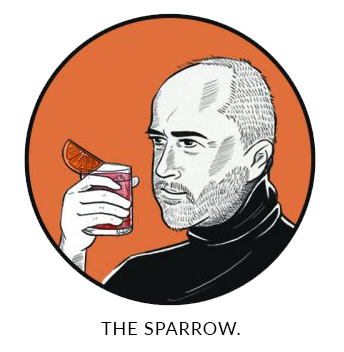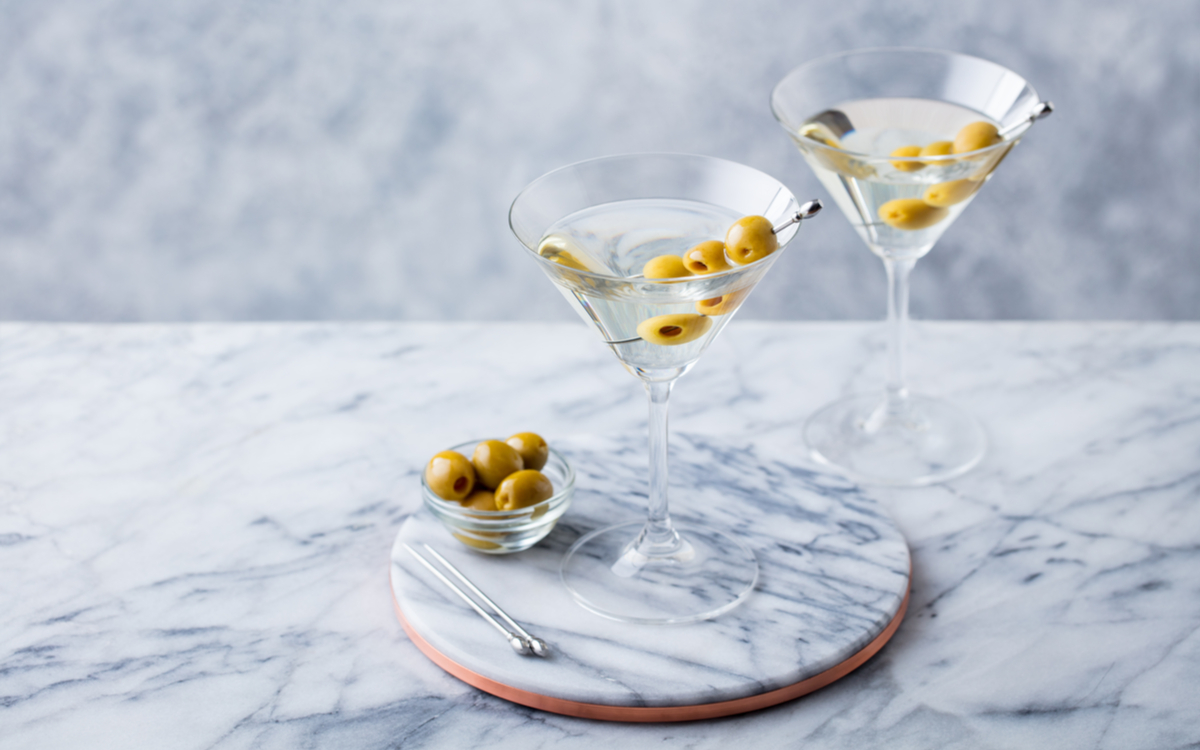Martini’s are probably the drink most people think of when cocktails are mentioned.
Therefore, it is no surprise there are several claims to its origin. A drink called a Martinez appeared in books from the 1880’s including in the 1887 edition of Jerry Thomas’ book “Bartenders Guide – How to Mix drinks”. There is also a town called Martinez in California, that makes the claim of invention after a prospector struck gold and asked a local barman to make him something special. However, both these versions are sweet drinks using an Old Tom style gin (sweeter than London Dry) and sweet vermouth. In their original form they don’t look or taste like our modern Martini.
A more obvious link is with Italian vermouth manufacturer Martini & Rossi, who were making vermouth from 1863. People asking for a gin and martini may have gradually shortened it “Martini”.
Another contender is the Knickerbocker Hotel in New York. The bar owned by John Astor was the home of barman Martini di Arma di Taggia. Martini allegedly made a drink of London dry gin, Noilly Prat vermouth and orange bitters in 1911. Legend has it that it was the favourite drink of John D Rockerfeller, however this seems unlikely as Rockerfeller was reportedly a lifelong teetotaler.
Regardless of the origin this last entry is the closest to our modern understanding of a Martini with a dry gin and dry vermouth. As the 20th century wore on it became increasingly popular to have your Martini as dry as possible, by decreasing the amount of vermouth – in some cases to none at all. Dorothy Parker whispered the word “vermouth” over her glass and Churchill glanced at the vermouth bottle (or over to France) while pouring his gin. Parker has also my favourite Martini quote, “I like to have a Martini, two at the very most –After three I’m under the table after four, I’m under my host.”
Recipe
Classic (with a twist)
50ml of London dry gin
10ml of French vermouth (Noilly Prat or Dolin)
Rub lemon peel around the edge of a chilled cocktail glass, twist then drop into the glass.
Stir gin and vermouth in a mixing glass or shaker (purists claim that shaking a gin Martini “bruises” the gin).
Strain contents into the cocktail glass.
Hemingway version (from a letter to publisher Charles Scribner in 1947)
“Just enough vermouth to cover the bottom of the glass, ounce ¾ of gin, and the spanish cocktail onions very crisp and also 15 degrees below zero when they go into the glass.”
1 ¾ oz. (about 50ml) of gin (Gordons 94 proof)
1/8 oz. (about 4ml – good luck measuring that) vermouth (Noilly Prat)
Stir in a mixing glass or shaker with lots of ice.
Strain into a chilled or frozen cocktail glass and garnish with frozen cocktail onions – a martini with onions is sometimes called a Gibson although a classic Gibson is 50/50 gin/vermouth.

Martinis are mentioned in five Hemingway novels from The Sun Also Rises (1926) to Garden of Eden (begun in 1946 and published posthumously in 1986).
In his 1950 novel ‘Across the River and into the Trees’ the “Montgomery” Martini is born. The main character, the ageing and disillusioned, Colonel Richard Cantwell, is in Italy reminiscing about his time there during the First World War. With his young lover, Renata, they visit Harry’s Bar in Venice where he explains to the barman how dry he wants his Martini. “Two very dry Martinis,” The Colonel said. “Montgomerys. Fifteen to one.”
Hemingway was not a fan of WW2 British Field Marshal Montgomery. The Fifteen to one refers to the odds he would need to engage in battle. The snipe is reinforced in the next line, “The waiter, who had been in the desert (North Africa in WW2), smiled …”
In The Garden of Eden, writer David and his wife Catherine engage in a gender swapping threesome with Marita. David introduces Marita to a Martini.
“It tastes very good but terribly strong.”
“They are strong,” David said. “But there’s a strong wind today and we drink according to the wind.”
I love this line. I look forward to the next windy day as an excuse for a Martini.
Hemingway specified that it had to be the 94% proof Gordons and the Noilly Prat vermouth. However, the 94% Gordons is no longer available. The strength was reduced in the early 1990s to decrease the tax in order to make the price more competitive with other white spirits, such as vodka. However, it is generally accepted that Tanqueray has a similar flavor to the old Gordons.
When a correspondent for Colliers magazine in the Second World War Hemingway often carried a canteen full of a pre-mixed Martini. He famously pulled it out after jumping in a ditch while his jeep was being riddled with bullets from a plane.
There are many versions of a Martini available, but I prefer variations of the classics. Try the Knickerbocker hotel version with orange bitters and orange peel instead of lemon.
Roger Moore (my third favourite James Bond) used lemon and olives. He rubbed the lemon peel around the edge of the glass, he then discarded it and put three small olives on a cocktail stick in the glass.
However large you like your Martini, I suggest working with a 5/1 to 10/1 ratio of gin to vermouth. Unlike Churchill or Dorothy Parker I think some vermouth is essential to get the most out of your Martini. Like Roger Moore, my father-in-law pours the vermouth over the ice in the cocktail shaker, swills it around then pours it out leaving the merest hint attached to the ice before adding the gin. Being a frugal Scot I hate to see waste, but I like his thinking.



